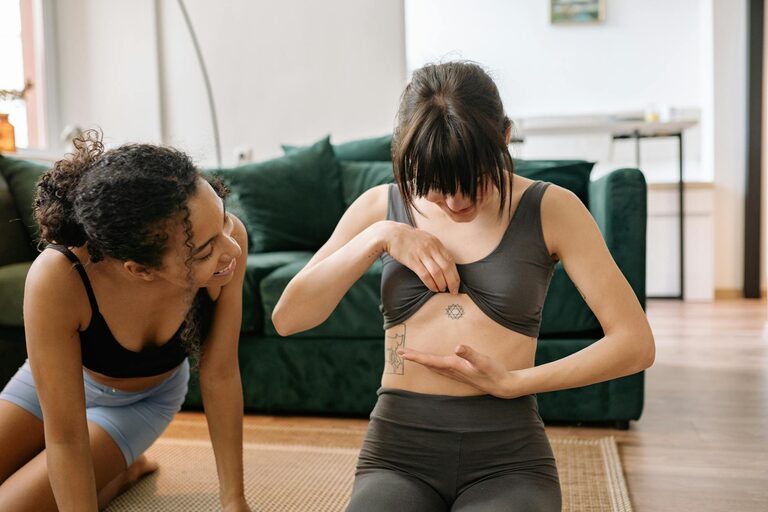
A Beginner’s Guide to Stretching at Home for Better Flexibility
Stretching is a simple yet effective way to improve your flexibility, reduce muscle tension, and promote overall well-being. Whether you want to ease daily stiffness, prepare for exercise, or simply feel more relaxed, stretching at home is a convenient option that requires no special equipment. This beginner’s guide will walk you through the basics of stretching, how to do it safely, and provide easy stretches you can do anywhere.
Why Stretching Matters
Stretching helps maintain the natural range of motion in your joints. When muscles are tight, movement can become restricted, leading to discomfort, poor posture, or even injury. Regular stretching can:
– Increase flexibility and mobility
– Enhance blood circulation
– Reduce muscle stiffness and soreness
– Improve posture and balance
– Promote relaxation and reduce stress
Starting with simple stretches at home can create a strong foundation for a healthier lifestyle.
When to Stretch
You can stretch at various times depending on your goals:
– After waking up: Helps ease morning tightness and prepares your body for the day.
– Before exercise: Gentle dynamic stretches warm up muscles to reduce injury risk.
– After exercise: Static stretches help muscles cool down and recover.
– Throughout the day: Short breaks with stretches improve circulation, especially if seated often.
Choose what fits your lifestyle best. The key is consistency.
Safety Tips for Stretching at Home
Stretching feels good, but it’s important to do it properly to avoid injury:
– Warm up first: Stretching cold muscles can cause strains. Try light walking or marching in place for 3-5 minutes.
– Move slowly: Avoid bouncing or jerking movements; this can cause muscle tears.
– Hold stretches: Aim to hold each stretch for about 15-30 seconds without pain. Mild discomfort is okay, but stop if you feel sharp pain.
– Breathe deeply: Deep, consistent breathing relaxes your body and maximizes the stretch.
– Start gently: Progress gradually, especially if you’re new or have health concerns.
– Listen to your body: Stretch to your comfort level. Increased flexibility comes over time.
If you have any medical conditions, consult your doctor before beginning a new stretching routine.
Basic Stretches for Beginners
Here are some easy stretches targeting key areas of the body. Perform each slowly and repeat 2-3 times as your body allows.
Neck Stretch
Relieves tension from long hours at the desk.
- Sit or stand with a straight spine.
- Slowly tilt your head to the right, bringing your ear toward your shoulder.
- Hold, then repeat on the left side.
Shoulder Stretch
Opens up tight shoulders and chest.
- Bring your right arm across your chest.
- Use your left hand to gently press your right arm closer to your chest.
- Hold, then switch arms.
Chest Opener
Good for posture and counteracting hunching.
- Clasp your hands behind your back.
- Straighten elbows and gently lift your clasped hands upward while opening your chest.
- Keep your head up and hold.
Cat-Cow Stretch (Spine Flexibility)
Improves mobility in the back and neck.
- Start on hands and knees.
- Arch your back while dropping your head and tailbone (Cat).
- Then, lower your belly and lift your head/tailbone (Cow).
- Flow slowly between these two positions.
Hamstring Stretch
Helps loosen the back of your legs.
- Sit on the floor with your right leg extended and left leg bent.
- Slowly lean forward from your hips toward your right toes.
- Keep your back flat and hold. Switch legs.
Quadriceps Stretch
Stretches the front of your thigh.
- Stand near a wall for balance.
- Grab your right ankle with your right hand, pulling your heel toward your buttocks.
- Keep your knees close and chest up. Hold, then switch legs.
Calf Stretch
Relieves tightness in your lower leg.
- Stand facing a wall with one foot forward and one foot back.
- Press your back heel into the floor as you lean into the wall.
- Hold, then repeat with the other leg.
Creating a Stretching Routine
To make stretching a habit, try the following steps:
- **Set a goal:** It could be to stretch 5 minutes every morning or after your workout.
- **Choose your stretches:** Pick 5-6 stretches targeting your common tight areas.
- **Schedule your time:** Consistency is easier when you stretch at the same time daily.
- **Track progress:** Notice improvements in flexibility or reduced discomfort.
- **Stay patient:** Flexibility gains take time and regular effort.
Even a short daily stretching session can bring noticeable benefits.
Helpful Tools for Stretching at Home
While no equipment is necessary, some tools may enhance your experience:
– Yoga mat: Provides comfort on hard floors.
– Stretching strap or towel: Helpful for deepening hamstring or shoulder stretches.
– Foam roller: Useful for muscle release but used separately from stretching.
– Timer or app: Keeps track of hold times for each stretch.
Final Thoughts
Stretching is a simple, low-impact way to improve your physical health and mental relaxation. Starting at home with basic techniques and progressing at your own pace makes it accessible to everyone. Remember to listen to your body, stay consistent, and enjoy the benefits of increased mobility and well-being.
Give these tips a try and make stretching part of your daily routine! Your muscles—and your mind—will thank you.
